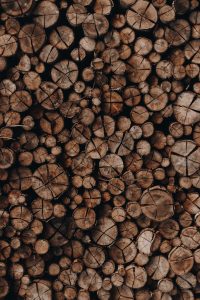Hobart, the capital city of the state of Tasmania, Australia, serves as the most populous and yet is the second smallest, in terms of territory. Hobart is Tasmania’s financial and administrative hub, serving both Australian and French Antarctic operations with a common home port for both. It acts as a major tourist hub entertaining more or less 1.8 million visitors (in 2016).
Through the course of time, Hobart has developed its skyline, airport and tourist spots, even more, making the cost of living for an average family of 4 – AUD$ 4,128.36 (without rent). With this budget, a single adult was estimated by Numeo to have about AUD$ 1,173.66 per month (without rent) —statistics for Hobart as of June 2019.
With these numbers in mind, the cost of living can be seen as average, compared to global cities such as Hong Kong or New York. That said, out of 12 cities in Oceania, Hobart had the least expensive meal in an inexpensive restaurant. That was not even a bad one! We stayed at one of the best hotels in Tasmania, and I will say the food standards was great across the board! Hobart’s expenditures as a whole is mostly spent on its local produce in the markets, which puts a lot of money back into the local economy – as Tasmania is unlikely to rely on imported goods.
This could be the reason why businesses in Tasmania are so popular amongst the locals! Everybody has a chance at living decently, without loan tie-ups or the risks of homelessness to deal with. In fact, looking at the top-performing businesses in Tasmania, it reflects its potential as one of the leading economic states of Australia.
NYRSTAR HOBART SMELTER
Based on the top income generator for Tasmania, processing metal, specifically, Zinc, is Nyrstar Hobart’s business. As they mine zinc, it goes under the melting process that produces it in special high grade, zinc casting and zinc galvanizing alloys. Besides their zinc smelter located at the Derwent River in Hobart, their aluminium producers on the Tamar River located by the Bell Bay, in the north, also own aluminium producers. All this helps generate Tasmania’s annual revenue of 1.3 billion (from the metal processing industry alone).
SPIRIT OF TASMANIA FERRY PORT in DEVONPORT
Because of the fast development in Tasmania in terms of economy and tourism, Tassie now generates 1.3 billion AUD annually. 50 cruise ships bring tourists every summer to cover the quiet winter months of Tasmania but it gets really busy when they come. So besides the port that could hold this number of visitors – restaurants, hotels, (even the smallest inns), summer holiday attractions like beaches, lake houses or waterparks – will always have good business.
GRANGE RESOURCES
Because of the mining of copper, zinc and lead, Tasmania had become a source of these raw metals and ores. As these metals become exported to other countries, it contributes four hundred million Australian dollars to Tasmania every year.
NORSKE SKOG AT BOYER, TASMANIA
Surprisingly, even if modern technology is undeniably taking over written communication, Tasmania’s producers of wood and paper are still one of the big generators of income for Tasmania. Norske Skog is a Norwegian company that sources wood and paper from them. That, when combined with timbre, adds up to half a billion dollars in revenue. As a result, Tasmania is becoming the number one source of paper in the whole world. Norske Skog which literally means “Norwegian Forest”, operates on 18 mills across the world, somehow earning about a billion in each mill. Petitions for Tasmania to preserve its forests continuously challenge this business. However, these pulp and paper capabilities are still actively operating as I write this.
PETUNA SEAFOODS TASMANIA
This award-winning Atlantic Salmon distributor leads the seafood industry in Tasmania since 1949. Tasmania’s revenue comes from unprocessed wild fisheries, abalone harvesting, breeding lobster and catching Atlantic salmon, amounting to an estimated hundred fifty million AUD annually. Their salmon comes from the remote coasts of Tasmania, where the saltwater from the great Southern Ocean collides with the cool Atlantic wilderness waters. At the Sydney Royal Summer Fine Food Show in 2016, Petuna Seafoods Tasmania’s Atlantic Salmon was even awarded a gold medal for their amazing Atlantic Salmon.
A tip: If you want to discover more about the sea-life, Hobart has excellent waterfront accommodation options!
These leading businesses are just but a few of the many that keep Tasmania afloat. There are still a number of income generators like meat production, local produce, dairy products, and manufactured goods via importation at play. These comprise hundreds of millions more in revenue. In addition, Tasmania’s information and technology sector continue to build up. Based on the progress of each of these companies, the economic potential of businesses in Tasmania seems more than promising.